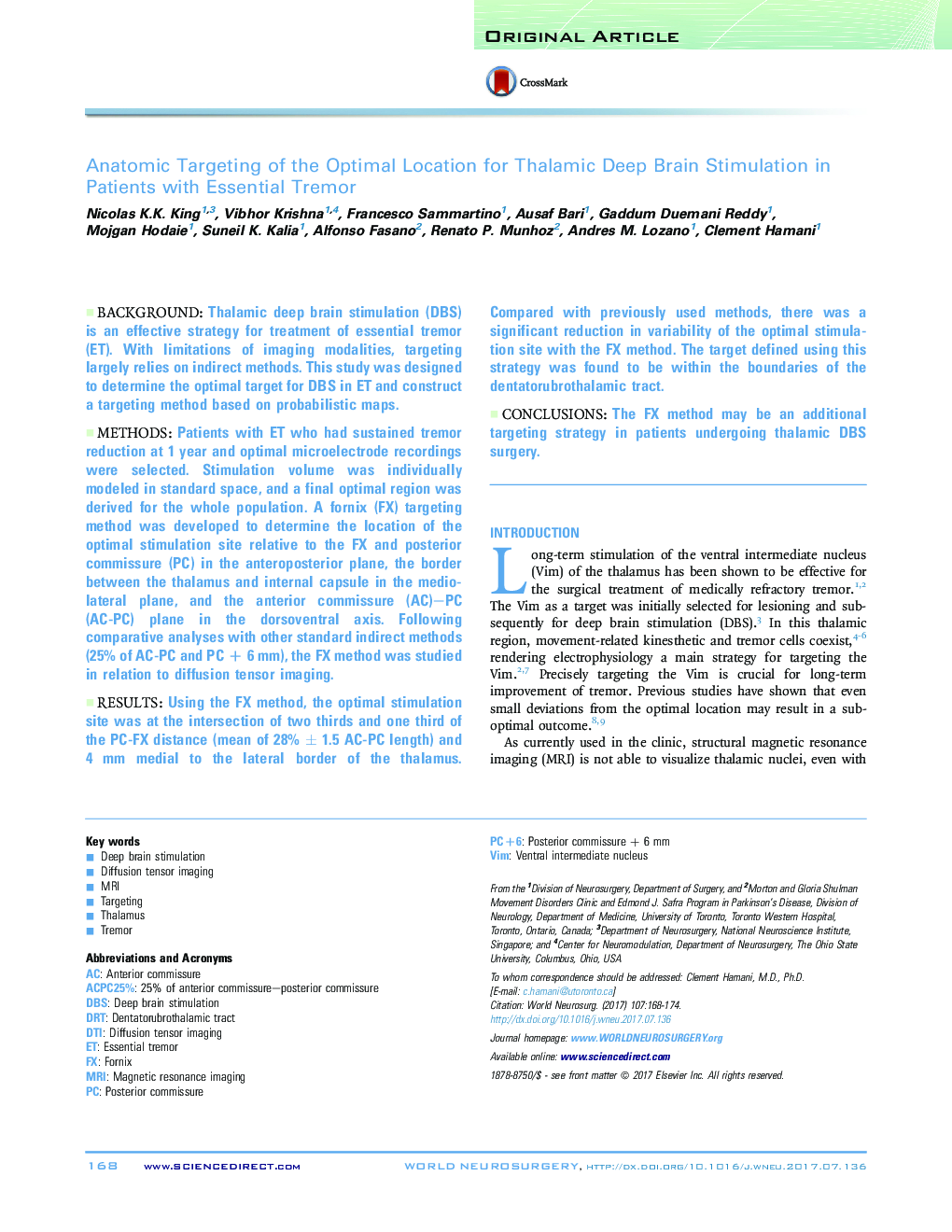| Article ID | Journal | Published Year | Pages | File Type |
|---|---|---|---|---|
| 5633870 | World Neurosurgery | 2017 | 7 Pages |
BackgroundThalamic deep brain stimulation (DBS) is an effective strategy for treatment of essential tremor (ET). With limitations of imaging modalities, targeting largely relies on indirect methods. This study was designed to determine the optimal target for DBS in ET and construct a targeting method based on probabilistic maps.MethodsPatients with ET who had sustained tremor reduction at 1 year and optimal microelectrode recordings were selected. Stimulation volume was individually modeled in standard space, and a final optimal region was derived for the whole population. A fornix (FX) targeting method was developed to determine the location of the optimal stimulation site relative to the FX and posterior commissure (PC) in the anteroposterior plane, the border between the thalamus and internal capsule in the mediolateral plane, and the anterior commissure (AC)-PC (AC-PC) plane in the dorsoventral axis. Following comparative analyses with other standard indirect methods (25% of AC-PC and PC + 6 mm), the FX method was studied in relation to diffusion tensor imaging.ResultsUsing the FX method, the optimal stimulation site was at the intersection of two thirds and one third of the PC-FX distance (mean of 28% ± 1.5 AC-PC length) and 4 mm medial to the lateral border of the thalamus. Compared with previously used methods, there was a significant reduction in variability of the optimal stimulation site with the FX method. The target defined using this strategy was found to be within the boundaries of the dentatorubrothalamic tract.ConclusionsThe FX method may be an additional targeting strategy in patients undergoing thalamic DBS surgery.
